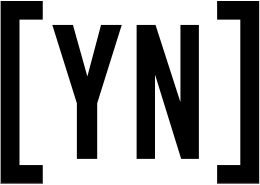Using an electric file can seem intimidating, but it doesn’t have to be. Learning how to use an e-file for beginners is a process that revolves mainly around good technique. A few simple basics to keep in mind will help you achieve gorgeous, professional-level results with this indispensable tool, which is just as convenient in the DIY home setting as it is in even the highest-end salon. Our team put together a few elementary “do’s” and “don’ts” to review that will help you get any set of nails in tip-top shape before a manicure or set of enhancements.
DO: Pull towards yourself and work in one direction
The first step in how to use the e-file is knowing how to orient your work in relation to your body. Assuming you are right-handed, you need to work forward. This means that, when operating your electric file, you will always pull the file in the direction of your body. If you are a southpaw, work in reverse. Whatever you do, don’t try to work side-to-side. This will result in the file flying off the side of the nail, which can potentially be dangerous. What you want to do is file only in one direction at a time, which allows you to maintain control of your tool.
DON’T: Forget that both nails and your e-file bit have zones
Imagine a capital letter “I” superimposed over the nail. The top bar of the “I” is the cuticle area, the bottom bar is close to the tip, and the central pole of the “I” runs down the middle of the nail. Working in order, to eliminate thickness you want to first file the center of the nail, then the cuticle area, then the tip. The side wall areas can be smoothed out last.
Remember that you should think of the body of your e-file bit as having three distinct zones: the top part of the barrel, the middle, and the base of the barrel. As you work down the length of the nail, starting at the cuticle, you want to use the topmost part of the file’s body, the middle region on the middle part of the nail, and the bottom part of the barrel, closest to the body of the file, on the tip. Different parts of the bit’s body are subject to different forces of ergonomic pressure. Some of this is a matter of muscle memory; once you grow accustomed to how you should run the bit over the nail, you won’t have to think about what part of its body you are angling to the nail bed.

DO: Keep your RPMs reasonable
There’s never a need to max out the speed setting on your electric file. It’s just not necessary. For almost all salon or home use applications, the max RPMs (rotations per minute) that you should ever need is 7,000 - 8,000, with a great deal of work happening at lower rotations. It’s the torque that’s going to make your file effective and quick, and not running your file at speeds that would put the Looney Tunes roadrunner to shame. Many novice nail enthusiasts have the mindset that more RPMs will make the product come off quicker, and this simply is not true.
DON’T: Forget to come in and finish with a hand file
Once you’ve carefully removed bulk with your electric file, a good old-fashioned hand file is what you need to shape the nail to perfection. Hand file the surface really easily, around the cuticle area and through the body, and you’ll have no issue because all the extra product has been taken down. No worries about overtaxing your wrist or wearing out files too quickly. For a nail professional, your most important asset is your body. Letting the electric file do the grunt work makes perfect sense.
Again, there’s no need to feel afraid of your electric file. With a bit of practice and focus on good technique, you can achieve nails that would make any wearer proud.



